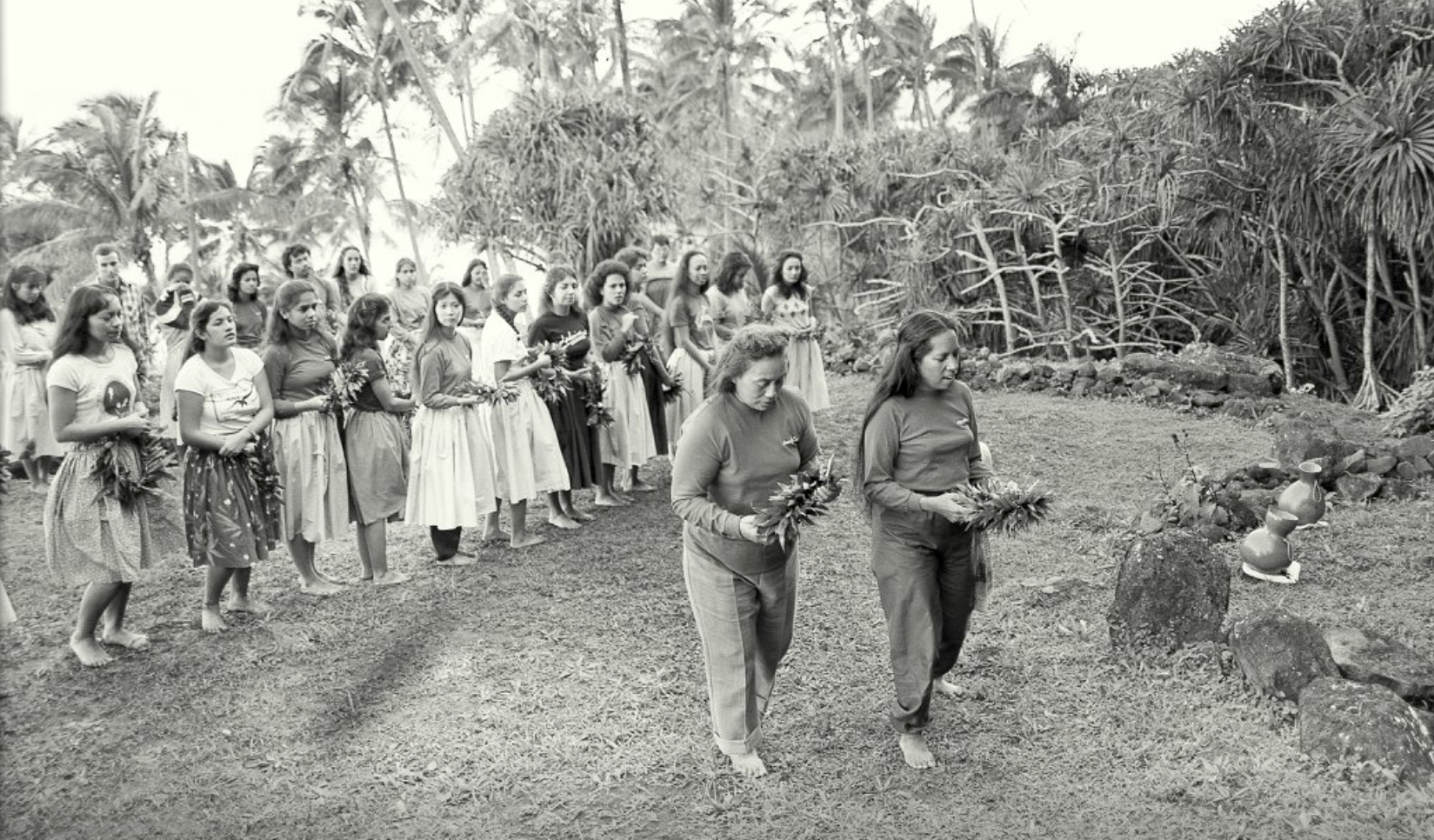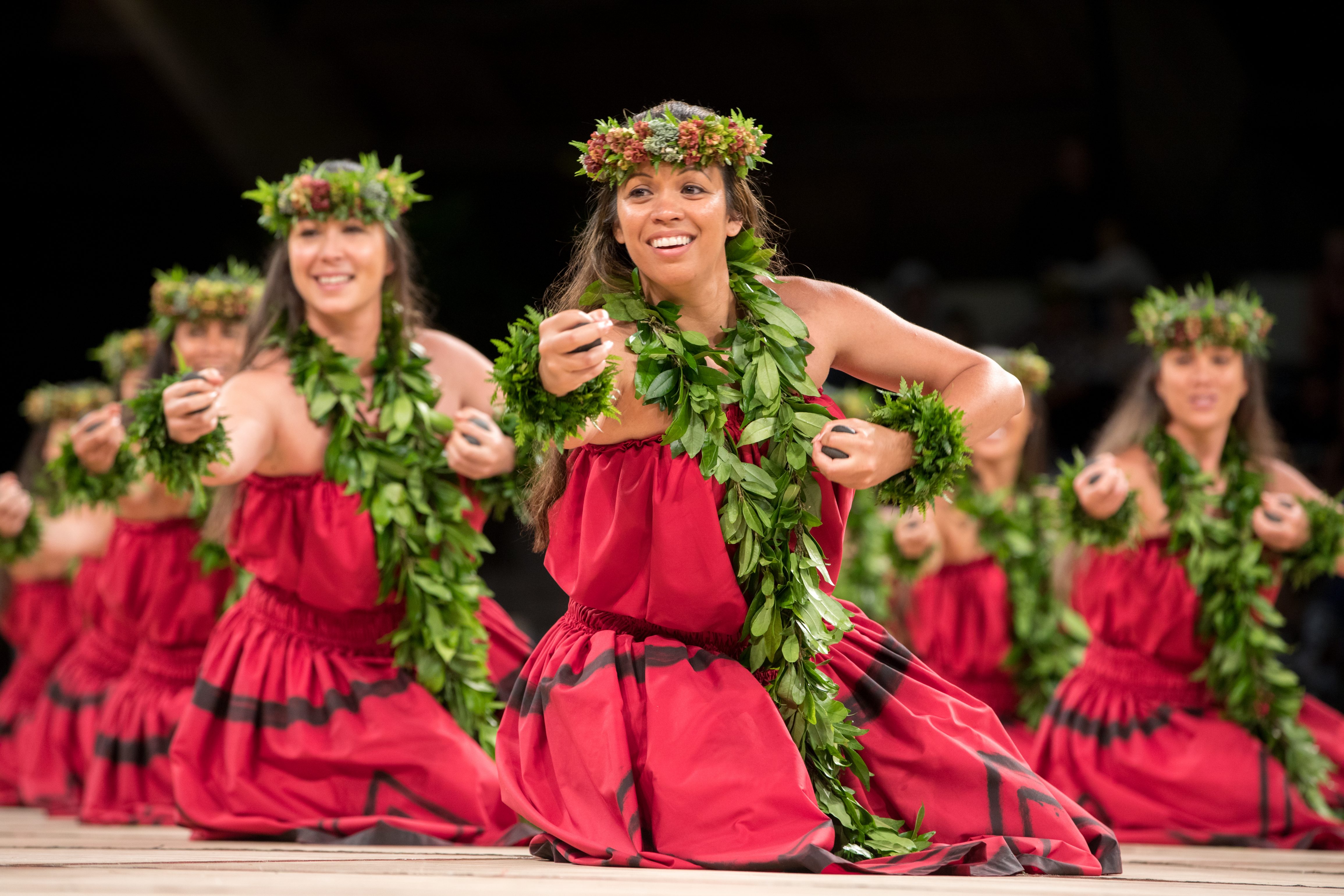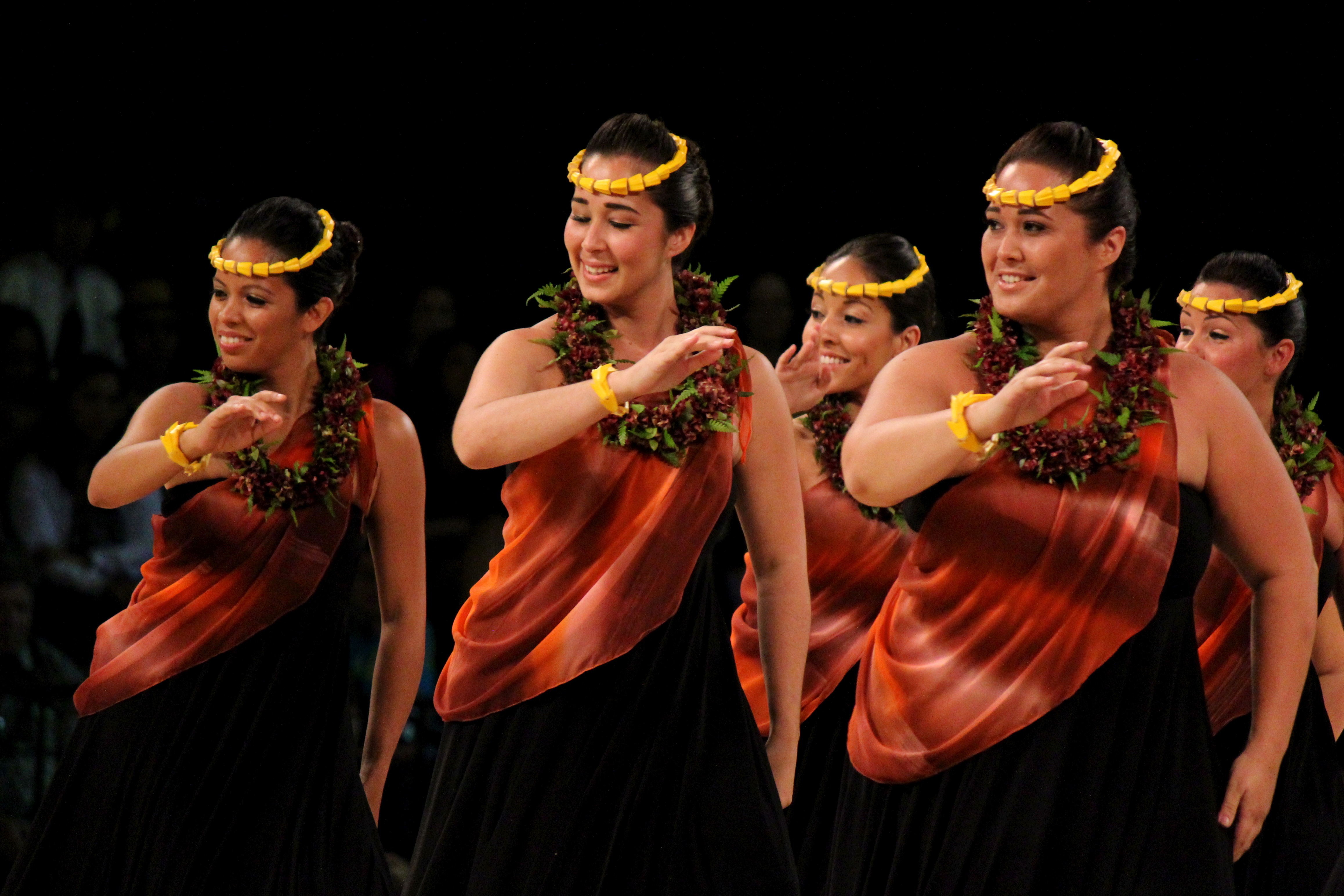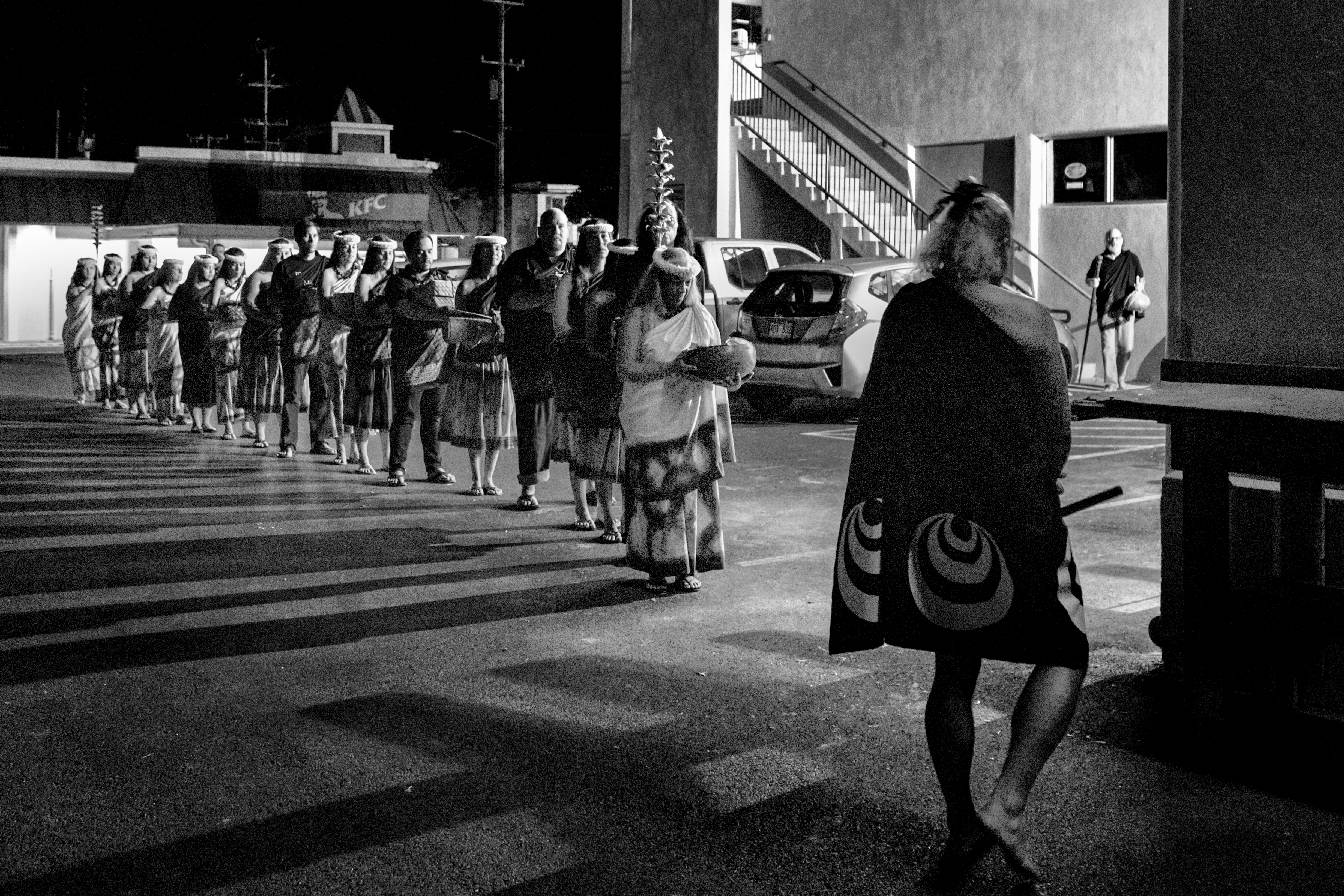old-school hula in the maiki tradition
About the halau
Halau Mohala Ilima is dedicated to the perpetuation of Hawaiian culture, aina, and identity through the discipline of hula. We specialize in traditionally learned and transmitted chants and dances – particularly those of the 18th and 19th centuries as taught by Maiki Aiu Lake – that commemorate the life of our land and people. We also specialize in mele for our Kailua home: in old, long-silent mele to which we have given voice and motion, and in new works that we have composed in celebration and resistance. In all this, we do our best to adhere to the principles of aloha and aloha aina since we believe that hula means little if it fails to sustain our lives, lands, and lahui.
About the kumu
Mapuana de Silva is a graduate of Punahou School (1967) and Pacific University (1971). In 1975, she also graduated as a kumu hula from Maiki Aiu Lake and, a year later, opened Halau Mohala Ilima. At the same time, she continued her hula studies under Lani Kalama, Sally Wood Naluai, and Pat Namaka Bacon, all of whom insisted that she hold fast to the repertoire and loina (customs, manners, practices) that she had learned from Aunty Maiki. And, to the best of Mapuana’s ability, she has stuck to these tenets. She is known today for her almost five decades of holding fast and carrying on – for her old-school ways and loyal adherence to Maiki’s legacy.
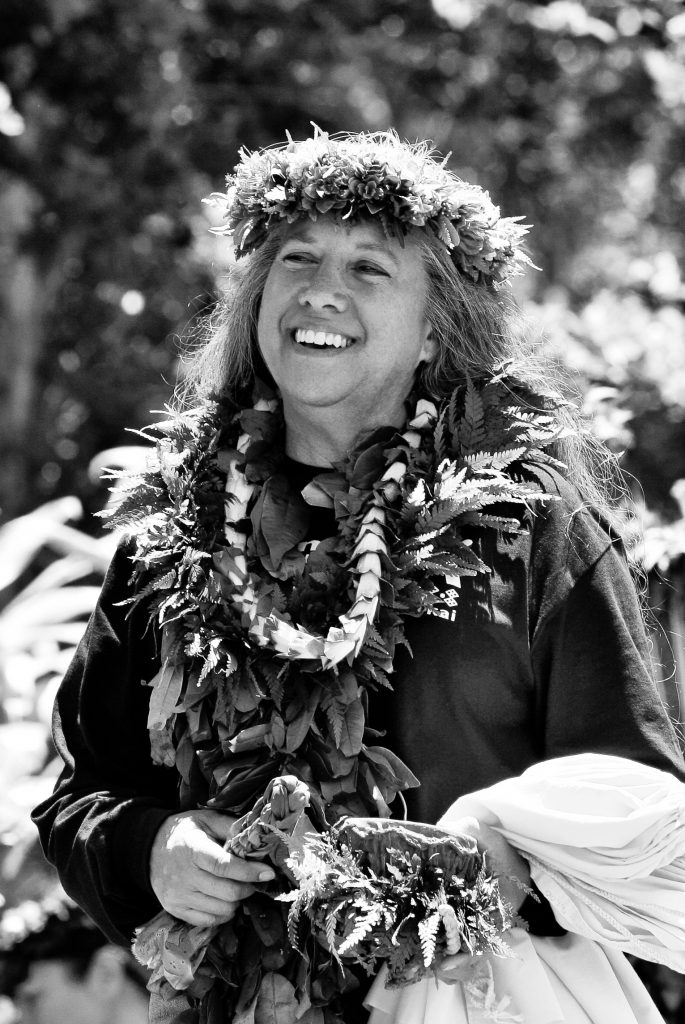
where WORDS AND manaO hold sway
mele from maiki
A ka Luna o Puuonioni
We continue to marvel over this scrappy little mele, this tongue-in-cheek wooing song of Kamapuaa, this prayer of Hiiaka, this pebble hula. “It belongs to antiquity, to the wa koliuliu” (what Aunty Maka Bacon liked to say in response to our niele questions of provenance), and yet here it is again, resilient as ever, chosen from our uniki canon (as transmitted from Kawena to Lokalia to Maiki to Mapuana), and inspired by Noenoe Zuttermeister’s admonition at a 2018 Merrie Monarch meeting; Where are your teachers’ dances, your traditions, the things you’re supposed to honor and preserve? That’s not what I’m seeing anymore at Merrie Monarch, that’s not what’s winning.
mele from our nupepa
O Kailua i ke Oho o ka Malanai
We’ve been chanting this mele and retelling its moolelo for so long – almost forty years – that we’ve forgotten some of the story’s details, added others that aren’t exactly in the originals, and generally gone fuzzy on the differences between the three nūpepa accounts of the story that are the source of our retelling. This is an effort, in early December 2017, to revisit Kapihenui (1862), Hooulumahiehie (1906), and Poepoe (1909). It is an effort to re-align what we say with what they’ve told us.
mele from our own peni
Hanohano Wailea
I composed “Hanohano Wailea” in 1984 after a walk to the beach. I went there to cool off after a day of yard work, but I came home quickly, far from cooled-off, with a mele stewing in my head. I’ve said elsewhere that I was inspired by the beauty of what I saw, but I was, in fact, aggravated by the palaualelo of what I’d heard.
I wrote “Hanohano Wailea” in response to a self-styled keiki o ka aina who had been giving his house guests a quick lesson in Lanikai landmarks. “That over there,” he said, “is Smith’s Point. Behind us is Pillbox Hill and to the north is Mid-Pac Knoll. And those twin islands out there are the Mokes.”
and we still hold fast to mo’o and moku
we’re not for everyone, but if you think we might be right for you . . .
LOCATION
Hinawaikolii
classes
We teach ten classes of hula a week: three for girls, five for women, one for boys, and one for men,
